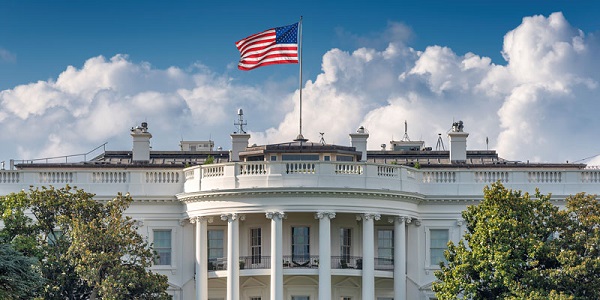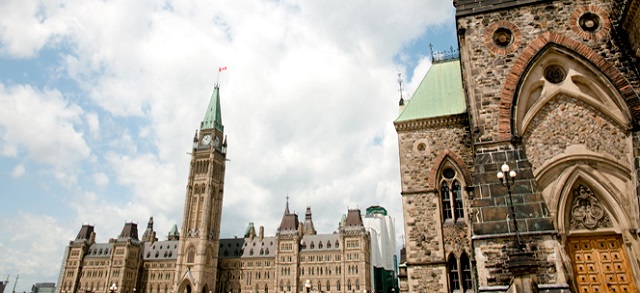Fraser Institute
U.S. election should focus or what works and what doesn’t work

From the Fraser Institute
As Republicans and Democrats make their final pitch to voters, they’ve converged on some common themes. Kamala Harris wants to regulate the price of food. Donald Trump wants to regulate the price of credit. Harris wants the tax code to favour the 2.5 per cent of workers who earn tips. So does Trump. Harris wants the government to steer more labour and capital into manufacturing. And so does Trump.
With each of these proposals, the candidates think the United States would be better off if the government made more economic decisions and—by implication—if individual citizens made fewer economic decisions. Both should pay closer attention to Zimbabwe. Yes, Zimbabwe.
Why does a country with abundant natural resources, rich culture and unparalleled beauty have one-sixth the average income of neighbouring Botswana? While we’re at it, why do twice as many children die in infancy in Azerbaijan as across the border in Georgia? Why do Hungarians work 20 per cent longer than their Austrian neighbours but earn 45 per cent less? Why is extreme poverty 200 times more common in Laos than across the Mekong River in Thailand?
Or how about this one: Why were more than one-quarter of Estonians formerly exposed to dangerous levels of air pollution when the country was socialist while today nearly every Estonian breathes clean air in what is ranked the cleanest country in the world.
These are anecdotes. However, the plural of anecdote is data, and through careful and systematic study of the data, we can learn what works and what doesn’t. Unfortunately, the populist economic policies in vogue among Democrats and Republicans do not work.
What does work is economic freedom.
Economic freedoms are a subset of human freedoms. When people have more economic freedom, they are allowed to make more of their own economic choices—choices about work, about buying and selling goods and services, about acquiring and using property, and about forming contracts with others.
For nearly 30 years, the Fraser Institute has been measuring economic freedom across countries. On one hand, governments can stop people from making their own economic choices through taxes, regulations, barriers to trade and manipulation of the value of money (see the proposals of Harris and Trump above). On the other hand, governments can enable individual economic choice by protecting people and their property.
The index published in Fraser’s annual Economic Freedom of the World report incorporates 45 indicators to measure how governments either prevent or enable individual economic choice. The result reveals the degree of economic freedom in 165 countries and territories worldwide, with data going back to 1970.
According to the latest report, comparatively wealthy Botswanans rank 84 places ahead of Zimbabweans in terms of the economic freedom their government permits them. Georgians rank 107 places ahead of Azerbaijanis, Thais rank 60 places ahead of Laotians, and Austrians are 32 places ahead of Hungarians.
The benefits of economic freedom go far beyond anecdotes and rankings. As Estonia—once one of the least economically free places in the world and now among the freest—dramatically shows, freer countries tend not only to be more prosperous but greener and healthier.
In fact, economists and other social scientists have conducted nearly 1,000 studies using the index to assess the effect of economic freedom on different aspects of human wellbeing. Their statistical comparisons include hundreds and sometimes thousands of data points and carefully control for other factors like geography, natural resources and disease environment.
Their results overwhelmingly support the idea that when people are permitted more economic freedom, they prosper. Those who live in freer places enjoy higher and faster-growing incomes, better health, longer life, cleaner environments, more tolerance, less violence, lower infant mortality and less poverty.
Economic freedom isn’t the only thing that matters for prosperity. Research suggests that culture and geography matter as well. While policymakers can’t always change people’s attitudes or move mountains, they can permit their citizens more economic freedom. If more did so, more people would enjoy the living standards of Botswana or Estonia and fewer people would be stuck in poverty.
As for the U.S., it remains relatively free and prosperous. Whatever its problems, decades of research cast doubt on the notion that America would be better off with policies that chip away at the ability of Americans to make their own economic choices.
Author:
Business
Pulling back the curtain on the Carney government’s first budget

From the Fraser Institute
By Jake Fuss and Grady Munro
The Carney government will spend more, run larger deficits and accumulate more debt than was previously planned by the Trudeau government.
In the 1939 film the Wizard of Oz, Dorothy and her companions travel to the Emerald City to meet the famous Wizard of Oz who will solve all their problems. When first entering the Wizard’s chambers, the group sees a giant ghostly head that meets their expectations of the “Great and Powerful Oz.” However, later on in the film (much to their disappointment) we learn that the Wizard is nothing more than an ordinary man operating a machine behind a curtain.
Canadians might feel a similar kind of disappointment about the Carney government’s first budget tabled on Tuesday. Prime Minister Carney promised a “very different approach” than that of his predecessor regarding Ottawa’s finances, and at first glance the budget appears to be this new approach. But when you pull back the curtain, it’s simply an escalation of the same failed fiscal policies Canadians have suffered for the last decade.
For context, the Trudeau government’s approach to government finances was record-high levels of spending, persistent deficits and massive debt accumulation. The Trudeau government created a fiscal mess, and as a “responsible fiscal manager” the Carney government has promised to clean it up.
To that end, the Carney government now separates spending into two categories: “operating spending” and “capital investment.” Capital investment includes any spending or tax expenditure (e.g. tax credits and deductions) that contribute to the production of an asset (e.g. infrastructure, machinery or equipment). Operating spending includes everything else, and is supposed to represent “day-to-day” government spending.
The government plans to balance the “operating budget”—meaning it will match operating spending to revenue—by 2028/29, while leaving capital investments to be financed through borrowing. Importantly, when calculating the operating balance, the government counts revenues that are foregone due to tax expenditures that are considered to be capital investments.
To help find the savings needed to balance its operating budget by 2028/29, the government initiated a “Comprehensive Expenditure Review” this past summer—the budget reveals the review’s results. Part of the review included a long overdue reduction in the size of the federal public service, as the government will cut 16,000 positions this year, and reach a total reduction of almost 40,000 by 2028/29 compared to levels seen two years ago. As a result of this spending review, the budget projects spending in 2028/29 will be $12.8 billion lower than it otherwise would have been.
This is the fiscal picture the Carney government is focusing on, and the one it undoubtedly wants Canadians to focus on, too. When taken at face value, balancing the operating budget, initiating a spending review, cutting the federal bureaucracy, and focusing on greater investment would certainly appear to be a different approach than the Trudeau government—which made no meaningful effort to balance the budget or restrain spending during its tenure, grew the bureaucracy, and allowed business investment to collapse under its watch.
But here’s the problem. When you pull back the curtain, all the rhetoric and accounting changes are just a way to obscure the fact the Carney government will spend more, run larger deficits and accumulate more debt than was previously planned by the Trudeau government.
Both operating spending and capital investment (which represents either additional spending or foregone revenue) impact the bottom line, and by separating the two the Carney government is simply obscuring the true state of Ottawa’s finances. If we ignore the government’s sleight of hand and instead compare total government spending against the revenues that are actually collected, the true size of the budget deficit this year is expected to equal $78.3 billion. Not only is that considerably more than the “operating” deficit the government is focusing on, it’s also nearly double the $42.2 billion deficit that was originally planned by the Trudeau government.
The story is similar for years to come. While the Carney government claims it will balance the operating budget by 2028/29, the overall deficit will be $57.9 billion that year. Over the four years from 2025/26 to 2028/29, overall deficits under the Carney government will equal a combined $265.1 billion. In comparison, the Trudeau government had only planned to run deficits equaling a combined $131.4 billion during those same four years—meaning the Carney government plans to borrow more than twice as much as the Trudeau government.
Driving this increase in borrowing is a combination of lower revenues and higher spending. From 2025/26 to 2028/29, the Carney government expects to collect $70.5 billion fewer revenues than the Trudeau government had previously projected. This difference likely comes down to a combination of the economic impact of U.S. tariffs along with various tax measures implemented by the Carney government that lower revenues (including cancelling a proposed increase to capital gains taxes and cutting the bottom federal personal income tax rate).
On the flip side, the Carney government plans to spend $63.4 billion more in total than the Trudeau government due to the introduction of considerable new spending commitments (notably on defence and housing), and the expectation of higher interest payments on its debt. The reality that spending is only set to rise under the Carney government stands in stark contrast to the prime minister’s rhetoric regarding “austerity” and the “ambitious savings” found by the government’s so-called spending review.
Higher spending and larger deficits will help grow the mountain of federal debt. By 2028/29, the Trudeau government had originally projected that total government debt would reach $2.6 trillion—which, based on the budget forecasts, would represent 72.2 per cent of the overall economy. The Carney government’s fiscal plan now puts total federal debt at $2.8 trillion by 2028/29, or 78.6 per cent of the overall economy. For perspective, the last time total federal debt pushed 80 per cent of the economy was during the 1990s when Canada teetered on the brink of a fiscal crisis.
Finally, the government’s approach to spending and the deficit doesn’t seem to be in line with what Canadians wanted to see from this budget. A poll conducted prior to the budget showed that 69 per cent of respondents felt it’s important for the government to balance the budget, compared to just 27 per cent who supported continued deficit spending. In fact, three out of five respondents felt that too much government spending has contributed to the rising cost of living and inflation—the issue they’re most concerned about.
Like a certain Wizard, Prime Minister Carney has made grand promises to fix many of the serious problems facing Canada. At first glance, the Carney government’s first budget may appear to deliver a new plan that will get federal finances back in order. Just pay no attention to the man behind the curtain.
Alberta
Alberta government’s plan will improve access to MRIs and CT scans

From the Fraser Institute
By Nadeem Esmail and Tegan Hill
The Smith government may soon allow Albertans to privately purchase diagnostic screening and testing services, prompting familiar cries from defenders of the status quo. But in reality, this change, which the government plans to propose in the legislature in the coming months, would simply give Albertans an option already available to patients in every other developed country with universal health care.
It’s important for Albertans and indeed all Canadians to understand the unique nature of our health-care system. In every one of the 30 other developed countries with universal health care, patients are free to seek care on their own terms with their own resources when the universal system is unwilling or unable to satisfy their needs. Whether to access care with shorter wait times and a more rapid return to full health, to access more personalized services or meet a personal health need, or to access new advances in medical technology. But not in Canada.
That prohibition has not served Albertans well. Despite being one of the highest-spending provinces in one of the most expensive universal health-care systems in the developed world, Albertans endure some of the longest wait times for health care and some of the worst availability of advanced diagnostic and medical technologies including MRI machines and CT scanners.
Introducing new medical technologies is a costly endeavour, which requires money and the actual equipment, but also the proficiency, knowledge and expertise to use it properly. By allowing Albertans to privately purchase diagnostic screening and testing services, the Smith government would encourage private providers to make these technologies available and develop the requisite knowledge.
Obviously, these new providers would improve access to these services for all Alberta patients—first for those willing to pay for them, and then for patients in the public system. In other words, adding providers to the health-care system expands the supply of these services, which will reduce wait times for everyone, not just those using private clinics. And relief can’t come soon enough. In Alberta, in 2024 the median wait time for a CT scan was 12 weeks and 24 weeks for an MRI.
Greater access and shorter wait times will also benefit Albertans concerned about their future health or preventative care. When these Albertans can quickly access a private provider, their appointments may lead to the early discovery of medical problems. Early detection can improve health outcomes and reduce the amount of public health-care resources these Albertans may ultimately use in the future. And that means more resources available for all other patients, to the benefit of all Albertans including those unable to access the private option.
Opponents of this approach argue that it’s a move towards two-tier health care, which will drain resources from the public system, or that this is “American-style” health care. But these arguments ignore that private alternatives benefit all patients in universal health-care systems in the rest of the developed world. For example, Switzerland, Germany, the Netherlands and Australia all have higher-performing universal systems that provide more timely care because of—not despite—the private options available to patients.
In reality, the Smith government’s plan to allow Albertans to privately purchase diagnostic screening and testing services is a small step in the right direction to reduce wait times and improve health-care access in the province. In fact, the proposal doesn’t go far enough—the government should allow Albertans to purchase physician appointments and surgeries privately, too. Hopefully the Smith government continues to reform the province’s health-care system, despite ill-informed objections, with all patients in mind.
-

 Business2 days ago
Business2 days agoBudget 2025 continues to balloon spending and debt
-

 Censorship Industrial Complex2 days ago
Censorship Industrial Complex2 days agoHow the UK and Canada Are Leading the West’s Descent into Digital Authoritarianism
-

 Business2 days ago
Business2 days agoFederal budget: Carney government posts largest deficit in Canadian history outside pandemic
-

 Business2 days ago
Business2 days agoCapital Flight Signals No Confidence In Carney’s Agenda
-

 International2 days ago
International2 days agoThe capital of capitalism elects a socialist mayor
-

 Economy2 days ago
Economy2 days agoThe True Cost of Mark Carney’s Ineffective Green Energy Sinkhole
-

 Daily Caller1 day ago
Daily Caller1 day agoUS Eating Canada’s Lunch While Liberals Stall – Trump Admin Announces Record-Shattering Energy Report
-

 Business1 day ago
Business1 day agoPulling back the curtain on the Carney government’s first budget












